Recent Comments
No comments to show.
Posted by admin in Babies 0-6 months, Babies 6 months - 4 years, General, How to, Safety on March 20th, 2017
We do a lot of installing of carseats and capsules round here. Approximately 3 or 4 dozen a week, rising to double that during peak periods. We work very hard to ensure that our fittings always exceed the manufacturer’s instructions and do our best to teach our customers how to safely use their restraint once they leave our premises.
The one issue that seems to arise quite often is whether or not the seat is installed “tightly enough”. There is a perception in the community that a carseat or baby capsule has to be “rock solid” to be safe and that any movement at all is a sign of poor workmanship, incorrect fitment and/or dangerous for the infant. Parents will “test” their child restraint by shaking or pushing it from side to side, and when it moves panic sets in.
A restraint that has a firm relationship to the vehicle is preferred, but this aspect is often taken way too far, with some customers ‘testing’ their fitting by shaking the restraint to prove it’s ‘safety level’. The engineering reality is that nothing that is to survive extreme forces is designed to be rigid. Everything is designed to flex. We do not catch a cricket ball with rigid arm, otherwise we would have a cricket team with multiple broken bones in their arms. The more rigidly a child restraint is attached to the chassis of the vehicle the more force the passenger will have to cope with. This is one ‘perceived benefit’ that attracts consumers to ISOFIX products, thinking that its a tighter = better fitment. Its important to note that seatbelt webbings and mountings exceed the strength of ISOFIX fittings so if your car or restraint doesn’t have ISOFIX you’re not missing out on anything in the safety department.
As long as your capsule or carseat doesn’t move more than about 1.5 cms at the belt path end (ie. where the seatbelt or isofix points are attached) then it is fine. Some movement in some circumstances is perfectly fine. Pushing, shaking or rocking the restraint does nothing and is not an adequate test of correct fitment.
All restraints under the Australian Standard are tested stringently and any restraint installed to the manufacturer’s instructions and used properly each and every trip will keep your baby safe in an accident.
If you have any questions or concerns about your restraint please don’t hesitate to contact our Restraint Fitting Team on 1300859775.
Posted by admin in Babies 0-6 months, Babies 6 months - 4 years, General, How to, Safety on March 27th, 2016
There is a lot to consider when choosing a car restraint for your new baby. With all the products on offer, the shiny colourful products and the pushy salespeople it can feel overwhelming. We’re often asked what should parents look out for when buying a new car seat/capsule etc? What features are important? What safety certification should they have? Our guide to choosing the right baby carseat or capsule will hopefully help you to make the right choice.
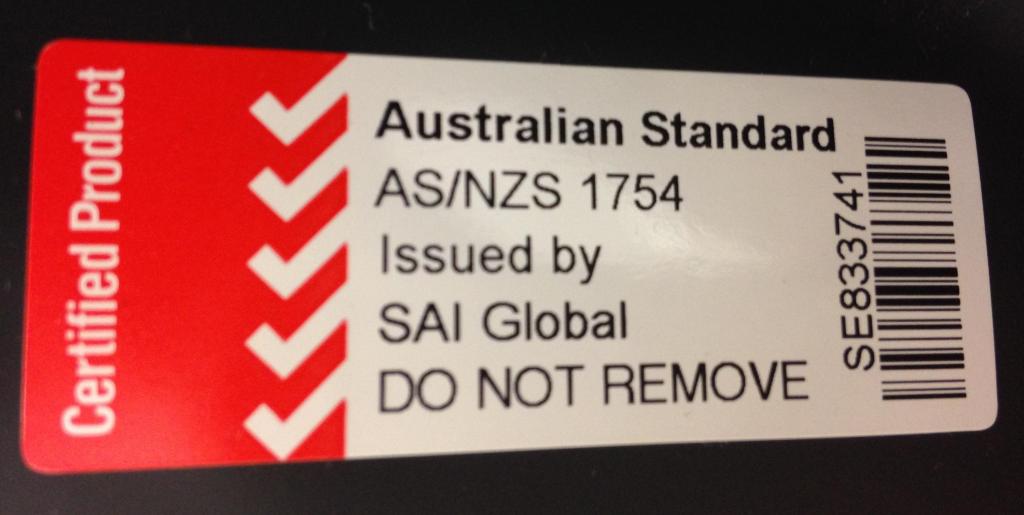
What to look for:
A booster seat is an additional seat that sits on top of the carseat to lift the child up several centimetres to avoid them being injured in the neck area by the car seatbelt. Booster seats should be used once a child no longer fits into their forward facing restraint as indicated by the shoulder height markers (and not just because they’ve celebrated their 4th birthday). There are two types of booster seats available on the Australian market. The first is a dedicated booster seat with a back. This type of booster uses the car lap/sash seatbelt to secure the child; the other is a convertible restraint that converts from a harnessed carseat into a booster once the child reaches the appropriate shoulder height marker within the restraint.
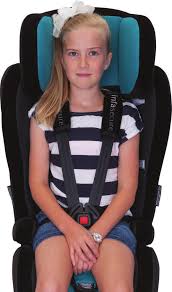
The new Type G restraints available here to hire or brand new seats to buy have an inbuilt harness suitable for children up to about 8 years of age.
Booster cushions (the little bottom only cushions that have no back, sides, head or tether) were deleted from the 2010 Australian child restraint standard and are no longer manufactured. They are however still used and are often seen for sale on the second hand market. I would not recommend you use one of these cushions due to the fact that they offer no side or head protection at all in a collision and could leave your child vulnerable to serious injury. The decision regarding when to move your child out of a booster is one that has confused many parents.
There is, however, a very simple 5-step test that can assist you to make the right decision. Seat your child in the car without the booster and buckle them up in the car seatbelt. Now answer these 5 questions:
If you’ve answered yes to all of those questions (and your child is over 7 and has outgrown their current restraint) then your child is ok to ride in the car without a booster.
Posted by admin in Explore Sydney, General, How to, Safety, Travelling with kids on March 27th, 2016
There’s a lot to consider when you’re looking to find the perfect car for your family. How many people are you likely to be transporting each day? What size pram, bikes etc will need to be stored in your boot? Bigger is not necessarily better, its more about what space is available in the vehicle and if it will configure to suit your family’s needs today, and into the future. In a panic you might be looking at a 7 seater to ferry all your kids and their friends to sport on Saturdays, but a vehicle with a versatile interior with multiple folding seat and access options that are easy to use may be all that is required.
Here’s our checklist to help you find the perfect car for your family:
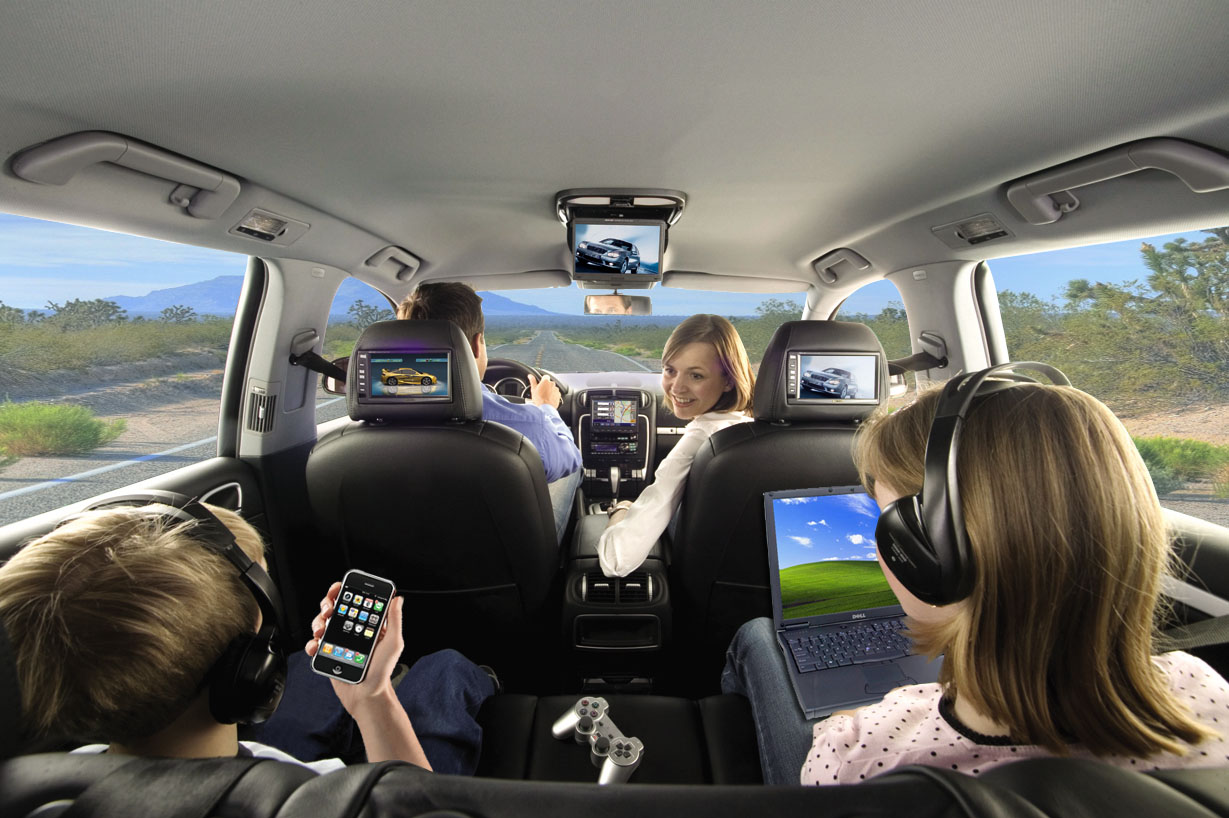
In car entertainment is quite legal for everyone except the driver (for obvious reasons!). Hearing the words “are we there yet?” on high repeat can turn a lovely Sunday drive into a teeth grinding horror movie. Many kids get bored in the car and need some distraction.
Thankfully these days, the electronica can come on the journey with you. Whether you choose handheld gaming consoles or go all out for the in-car entertainment system, you might get from A to B with barely a noise from the back seat.
Its important that safe headphones are used to avoid distracting the driver and that the children know how to activate/reactive their games or movies themselves so that the driver isn’t required to intervene and take their eyes off the road.
If you’re not a fan of devices in the car, that’s ok. There’s always eye-spy!
Posted by admin in Babies 0-6 months, Babies 6 months - 4 years, General, Safety on September 28th, 2015
Did you know – Road trauma is the leading cause of death for Australian children up to 14.
You can however keep your children safer from harm by having properly installed restraints and correctly using your car and booster seats in your car. And before you roll your eyes and say, “Yeah, yeah I know all this already I have 4 kids” know this: Various studies have shown that even for parents who are on their third or even fourth child, car seat use and installation is one of the few things that people tend not to get better at.
Correct installation and ongoing use can be a matter of life and death – so please sit down and read.
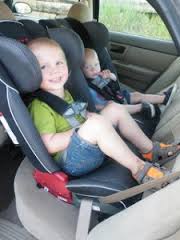
Once your child outgrows their baby capsule or baby carseat (which are always rear facing) then you’re ready to move them to a convertible carseat. There’s no reason why that seat needs to be forward facing. There are plenty of seats on the market that allow extended rear facing. Legally children can forward face at 6 months of age. But “can” and “should” are two different things. You should always keep your child rear facing until they reach the rear-facing limits of their convertible seat. With most modern seats that will happen from around 18 months old to 2 years plus.
A common misconception we hear from parents is that they are concerned that their child’s legs will be squashed or in a dangerous position while rear facing. The fact is that children are actually at greater risk for leg injuries when they are forward facing in the car because in an accident, their feet make contact with the seat in front of them, which is simultaneously moving backward. Yep – in an accident – everything moves. The result is a compression injury, something that doesn’t happen when the child is rear-facing.
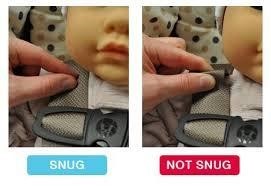
Child Car Seats is an initiative of the Child Restraint Evaluation Program (CREP), a consortium of government agencies and motorist organisations who aims to provide consumers with information to help choose safe child car seats and to apply pressure on car seat manufacturers to only market seats that perform well beyond the Australian Standard.
Posted by admin in Babies 0-6 months, General, How to, Safety on September 7th, 2015
We are often asked which of our baby capsules for hire are the lightest in weight or the smallest in size so to make it nice and easy we’ve prepared a simple comparison table for you here. The table lists all our current capsules for rent and their weight and dimensions as well as their CREP (safety) rating where that rating is available.
| Product | Capsule weight (out of base) | Product dimensions | Pram compatibility | 2nd base available for hire from Rockabye Baby Hire |
|---|---|---|---|---|
| Safety 1st One Safe Infant capsule | 3.5 kgs | H 440 mm x D 660 x W 430 | Safety 1st, Maxi Cosi | Yes |
| Babylove Snap’nGo Series BL620A/2010 | 3.8kgs | H 405 mm x D 660 x W 430 | Babylove, Valco | Yes |
| Chicco KeyFit Plus 79046 | 4.8 kgs | H: 415mm x D: 710 x W 435 | Chicco, Bugaboo, Baby Jogger, Mountain Buggy | Yes |
| Arlo Baby capsule (with or without ISOFIX) | 3.8 kgs | H: 540 mm x D: 745 x W: 460 | Arlo Stroller available for hire | Yes |
| PegPerego Primo Viaggio PP01/2010 | 5 kgs | H 430 mm x D 720 x W 440 | Peg Perego, Bugaboo, Baby Jogger, Phil & Teds, Mountain Buggy | Yes |
| Maxi-Cosi MICO AP (with or without ISOFIX) | 3.9 kgs | H 415 mm x D 760 x W 430 | Quinny, Maxi Cosi, Bugaboo (Mico only), Baby Jogger, Phil & Teds, Mamas & Papas, Icandy, Valco, Joolz, Jane Rider | Yes |
If you have other questions please don’t hesitate to contact one of our friendly staff either via email on jess@rockabyebabyhire.com.au or by telephoning 02 95894942.
Posted by admin in General, How to, Maternal Health, Safety, Travelling with kids on August 31st, 2015
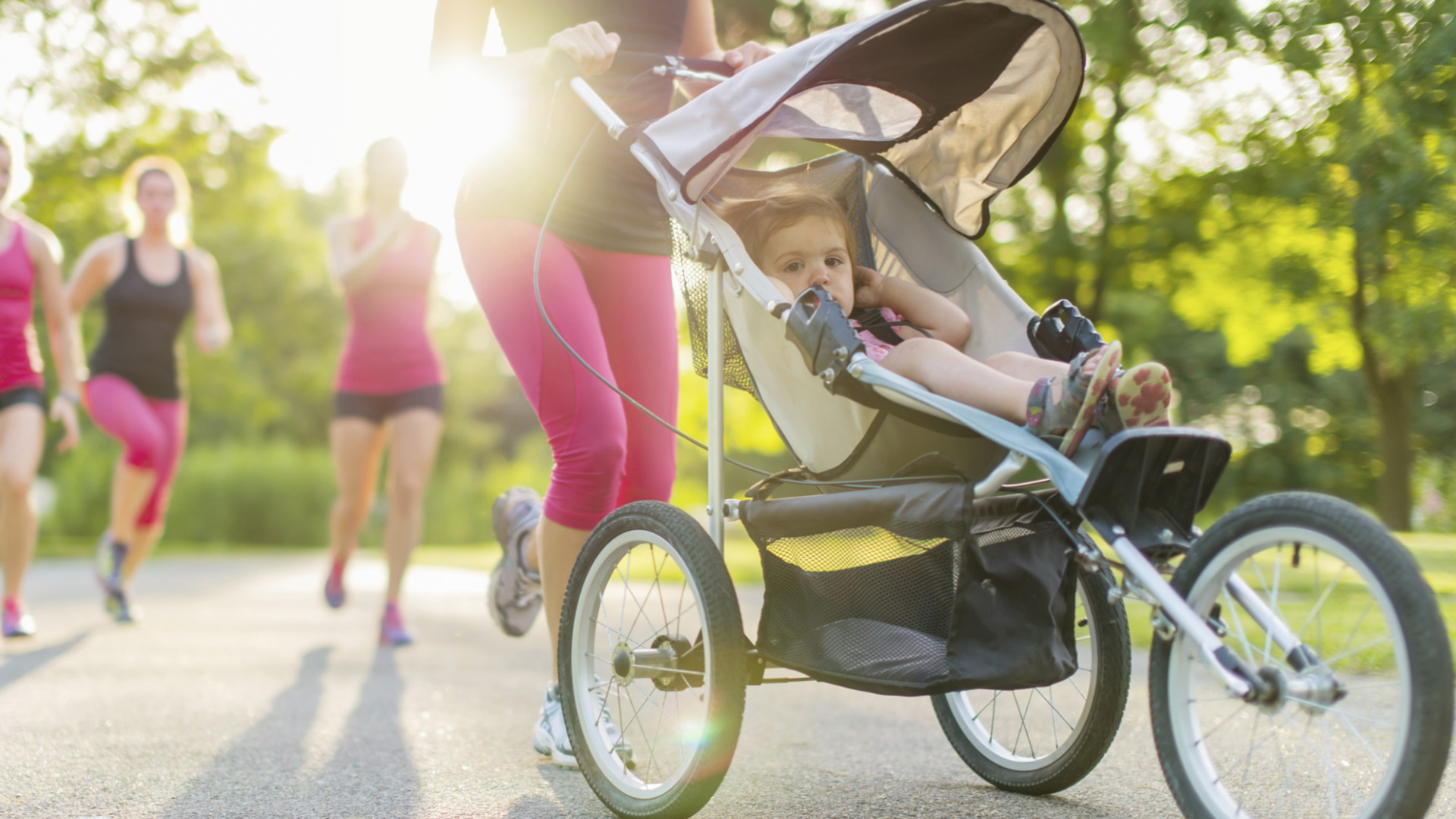
Getting back into exercise after having a baby can feel like a big ask but getting out there in the fresh air together can really benefit your mental as well as physical health. Before you start it is important to get clearance from both your own care provider and your baby’s paediatrician to confirm you’re both ready for exercise. Babies will require some time to have the necessary head and neck strength to prevent injury, as you’ll need to make sure all is well post-birth.
When you’re choosing your jogging stroller, be sure to check for features designed to keep you and your baby safe. Look for a fixed front wheel that does not swivel, which allows your stroller to continue moving straight forward as you jog, and a five-point safety harness for keeping your infant safe and stable within the pram. Check for well-inflated tires, good suspension and effective shock absorbers, as well as features like hand brakes and a wrist strap to prevent the stroller from getting away from you on hills or if you become distracted at all. If you’re not sure you might consider hiring a jogging pram to try before you buy.
Looking to hire a jogging pram for your holiday in Sydney? Click here to check out our Nipper Sport prams for hire.
Posted by admin in Babies 0-6 months, General, Safety on May 11th, 2015
With so many different capsules and carseats available on the market today in Australia, it can be really difficult to choose. So many brands, names, colours, recommendations from friends and family – new parents can be quite overwhelmed with so much to choose from and so many questions including:
To help answer all of these questions we have put together a summary below as well as some information on safety testing and ratings of our current range of baby capsules for hire.
The website www.childcarseats.com.au is an initiative of the Child Restraint Evaluation Program (CREP), a consortium of government agencies and motorist organisations who share a common interest in improving safety for children travelling in vehicles. CREP provides parents with independent and unbiased information on the levels of child protection from injury in a crash provided by child car seats and the ease with which they can be used correctly.
The Child Restraint Evaluation Program (CREP) assesses the crash protection performance of car seats using three simulated crash tests:
In all tests, crash test dummies that are equal to or above the upper end of the mass limit for each type of child car seat are used to measure the forces experienced by the dummy during the test. The data gathered is then analysed and the car seats are scored based on several performance aspects.
| Product | CREP Safety Test result (out of 5 stars) | Product dimensions and weight | Pram compatibility | 2nd base available for hire from Rockabye Baby Hire |
|---|---|---|---|---|
| Safety 1st One Safe Infant capsule | 5 out of 5 stars | H 440 x D 660 x W 430 3.5 kgs |
Safety 1st, Maxi Cosi | Yes |
| Babylove Snap’nGo Series BL620A/2010 | 4 out of 5 stars | H 405 mm D 660 mm W 430 3.8kgs | Babylove, Valco | Yes |
| Chicco KeyFit Plus 79046 | 4 out of 5 stars | H: 415mm D: 710mm W: 435 4.8 kgs |
Chicco, Bugaboo, Baby Jogger | Yes |
| Nuna Pipa CF-03 | 4 out of 5 stars | H: 470mm D: 745mm W: 450mm | 60 + compatible prams! | Yes |
| PegPerego Primo Viaggio PP01/2010 | 3 out of 5 stars | H 430 mm D 720 mm W 440 mm 5 kgs |
Peg Perego, Bugaboo, Baby Jogger, Phil & Teds, Mountain Buggy | Yes |
| Maxi-Cosi MICO Air MCM 2010 | 3 out of 5 stars | H 415 mm D 760 mm W 430 mm 3.9 kgs |
Quinny, Maxi Cosi, Bugaboo (Mico only), Baby Jogger, Phil & Teds, Mamas & Papas, Icandy, Valco, Joolz, Jane Rider | Yes |
Baby capsules for hire in Sydney – just call Rock-A-Bye Baby Equipment Hire prices range from just $60 for 6 months and all capsule hires come with free professional installation by one of our ACRI accredited restraint fitters.

Posted by admin in General, How to, Safety, Travelling with kids on May 8th, 2015
For many parents, the idea that the seat be installed the tighter it can go the better. For many reasons including the engineering that goes into the restraints and crash dynamics this is somewhat untrue and can cause unnecessary anxiety.
Ideally No. For a more satisfactory fitment and one, which is less likely to cause unnecessary injury to all passengers, we recommend and always work until we get a firm fitment.
If you’ve followed the manufacturers’ instructions accurately, some movement may be present – and that’s ok. Despite a common opinion, pushing on a restraint particularly at the end that it is not attached to the car, and pushing it with your hand from side to side is not a valid test and may only loosen the seatbelt’s relationship with the restraint leaving it requiring reinstallation. If you want a firmer fitment, then there are many ways that can be achieved. Your particular restraint may have device that can contribute to that, otherwise a ‘Gated buckle’ or deploying the ALR seatbelt (if available) may be useful for this purpose.

Going by the Australian Standards, engineering and testing processes a restraint does not have to be ‘rock solid’ to be safe. Be mindful that even mild tension on the vehicle seat cushion may damage the vehicles trim, especially leather trim. Restraints can also be damaged by over-tensioning. A good rule of thumb is that if you pull on the car seat, if it moves more than 1 inch from front to back, or side to side – and this is the important bit – at the the belt path end of the restraint, it is not tight enough.
Often parents will grab the opposite end of their capsule base (where it not tethered) and start pushing it side to side and become anxious that the base isn’t installed correctly and is dangerous. As long as the restraint is fitted to the manufacturer’s specifications and the restraint is not moving more than an 1 inch at the belt path area it is in fact fine.
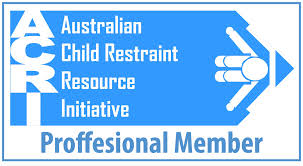
Be mindful that even mild tension on the vehicle seat cushion may damage the vehicles trim, especially leather trim. Restraints can also be damaged by over-tensioning which is a common issue with people not qualified to install your seat.
If you have followed the manufacturer’s instructions and are still concerned please seek professional advice from an RTA or ACRI accredited restraint fitter.